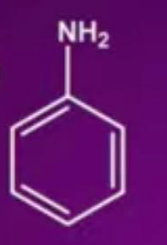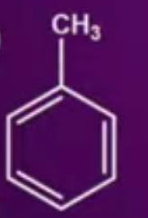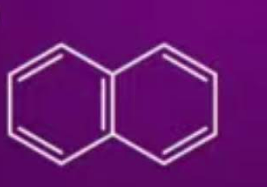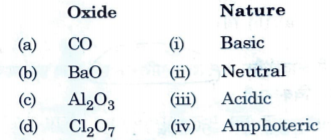Which of the following is not a benzenoid ?




To determine which of the given compounds is not a benzenoid, we need to understand what a benzenoid compound is. A benzenoid compound is defined as a compound that contains at least one benzene ring in its structure.
1. Identify the Definition of Benzenoid Compounds:
- Benzenoid compounds are those that contain at least one benzene ring in their molecular structure.
2. Examine Each Option:
- Option 1: Check if there is a benzene ring present.
- Option 2: Check for the presence of a benzene ring.
- Option 3: Check for the presence of a benzene ring.
- Option 4: Check for the presence of benzene rings.
3. Analyze Option 1:
- Upon examining option 1, we find that it does not contain a benzene ring. Therefore, it does not qualify as a benzenoid compound.
4. Analyze Other Options:
- In option 2, there is a benzene ring present.
- In option 3, there is a benzene ring present.
- In option 4, there are two benzene rings present.
5. Conclusion:
- Since option 1 is the only option that lacks a benzene ring, it is the correct answer to the question of which compound is not a benzenoid.
Final Answer:
- Option 1 is not a benzenoid compound.
- Benzenoid compounds are those that contain at least one benzene ring in their molecular structure.
- Option 1: Check if there is a benzene ring present.
- Option 2: Check for the presence of a benzene ring.
- Option 3: Check for the presence of a benzene ring.
- Option 4: Check for the presence of benzene rings.
- Upon examining option 1, we find that it does not contain a benzene ring. Therefore, it does not qualify as a benzenoid compound.
- In option 2, there is a benzene ring present.
- In option 3, there is a benzene ring present.
- In option 4, there are two benzene rings present.
- Since option 1 is the only option that lacks a benzene ring, it is the correct answer to the question of which compound is not a benzenoid.
- Option 1 is not a benzenoid compound.
Topper's Solved these Questions
Similar Questions
Knowledge Check
- Question 1 - Select One
Aromatic hydrocarbons are highly unsaturated molecules but behave like saturated hydrocarbons. Those which contain a benzene ring are called benzenoids but those which contain some highly unsaturated ring other than benzene are called non-benzenoids. Their aromatic character can be ascertained through Hückel rule. Aromatic hydrocarbons are, however, more reactive than alkanes but are less reactive than alkenes and alkynes. The lower reactivity of arenes is because of the extra stability associated with these molecules due to delocalization of -electrons. Their stability is measured in terms of resonance energy which can be estimated from either heat of combustion or heat of hydrogenation data. They normally undergo electrophilic substitution reactions. In presence of a Lewis acid catalyst, nuclear halogenation occurs but in absence of Lewis acid catalyst and in presence of light, halogens add to the benzene ring. If an aromatic hydrocarbon contains an alkyl side chain, then in presence of heat/light side chain halogenation occurs in preference to addition of halogens to the benzene ring. The reactivity of aromatic hydrocarbons towards electrophilic substitution reactions depends upon the electron density in the benzene ring. Electron-donating groups favour while electron-withdrawing groups retard these reactions. Orientation of electrophilic substitution reactions is governed by the nature of the substituent already present in the ring. Although aromatic hydrocarbons are resistant to oxidising agents (KMnO4,K2Cr2O7, etc.) they do undergo ozonolysis.
Which of the following is not a non-benzenoid aromatic compound ?ATropylium cationBAzuleneCTropoloneDDiphenyl - Question 2 - Select One
Which of the following is a benzenoid aromatic compound?
A(1) AzuleneB(2) TroponeC(3) TropoloneD(4) Phenanathrene - Question 3 - Select One
Which one of the following is a benzenoid aromatic compound ?
AFuranBThiopheneCPyridineDAniline
Which one of the following is a non-benzenoid aromatic compound
View SolutionWhich of the following is not a product of the following reaction
 View Solution
View SolutionWhich of the following benzenoid aromatic hydrocarbons consists of isolated benzene rings?
View SolutionWhich of the following is correct about the following?
View SolutionWhich of the following is not followed in Remedial teaching?
View Solution


